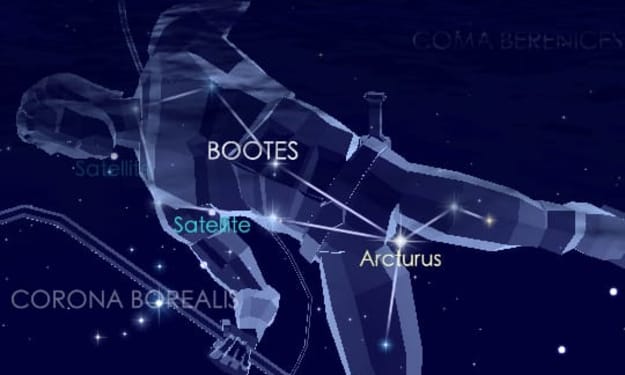MYSTERIOUS SIGNAL FOUND BY SCIENTISTS
IS THERE OTHER LIFE OR CREATURE EXIST?

In recent years, a profound mystery has captured the attention of researchers and the public alike: the discovery of a mysterious signal of unknown origin. This signal, which has confounded scientists, possesses a unique quality that sets it apart from previous cosmic discoveries: it has been reaching our planet for the past three decades, completely unbeknownst to us. The implications of this revelation are both tantalizing and daunting, raising questions about the potential source of the signal and the prospect of contact with an intergalactic civilization. Could we, as some scientists suggest, be on the brink of a groundbreaking encounter with extraterrestrial life? And what would the revelation that we are not alone in the universe mean for humanity as a whole?
The journey into this fascinating cosmic puzzle begins with the invention of the first operational radio telescope in 1937, a milestone achieved by the American amateur astronomer Grote Reber. Reber's homemade telescope marked the dawn of our quest to listen for sounds emanating from the far reaches of the cosmos, a quest driven by the hope of intercepting a radio signal that would unequivocally demonstrate that we share the universe with other intelligent beings.
Radio waves, which are integral to this quest, parallel light waves as part of the electromagnetic spectrum. They travel through space at the staggering speed of 186,282 miles per second (approximately 300,000,000 meters per second). Radio telescopes, such as the one used in the search for extraterrestrial intelligence (SETI), have been meticulously scanning the vast expanse of space, eagerly awaiting signals that might emanate from a technologically advanced civilization.
The annals of cosmic signals are marked by several intriguing discoveries, but one has stood out for its mystique and enigma: the Wow! signal. This enigmatic radio transmission, detected on August 15, 1977, captured the imagination of both the scientific community and the public. It remains one of the most famous and puzzling radio signals ever intercepted by SETI. The signal was initially observed by the Big Ear Radio Telescope at Ohio State University's Perkins Observatory, which was being used for SETI research at the time.
Dr. Jerry R. Ehman, an astronomer actively involved in the SETI project, was the scientist who stumbled upon this signal while scrutinizing data collected by the Big Ear telescope. What set the Wow! signal apart was its remarkably strong and narrowband nature, a quality that defied easy explanation. So striking was this discovery that Ehman circled the data point on the computer printout and appended the exclamation "Wow!" in red ink, bestowing the signal with its now-iconic name.
The reason for Ehman's astonishment lay in the signal's frequency, which was 1420.4 MHz. This frequency aligns with the hydrogen line, a wavelength that holds significant appeal for scientists exploring the possibility of interstellar communication by extraterrestrial civilizations. The hydrogen line in radio astronomy is a unique frequency attributed to the radio waves emitted by hydrogen gas in space. These waves result from the energy emitted by hydrogen atoms, making this frequency a distinctive "fingerprint" for hydrogen, and it occurs around 1420 megahertz.
For four decades, the origin of the Wow! signal remained an enigma, leaving astronomers perplexed and intrigued. However, in 2017, Professor Antonio Paris of St. Petersburg College presented a provocative theory, suggesting that the signal may have been generated by a pair of comets named 266P/Christensen and 335P/Gibbs. These comets are surrounded by clouds of hydrogen gas that extend millions of miles into space.
Yet, this theory failed to convince all experts, including Ehman, who remained skeptical about the comet explanation. One of the central issues was that the signal did not repeat, and it appeared for only a brief duration. Given the nature of the Big Ear telescope, which featured two 'feed horns' offering distinct fields of view, Ehman argued that if the signal had been generated by a comet, it should have appeared twice, with each occurrence lasting precisely 72 seconds within a minute and a half. Importantly, Ehman was not advocating the idea that it was necessarily an extraterrestrial signal, either.
The Wow! signal retains its distinction as the most potent cosmic signal ever received, yet the veil of mystery shrouding its origin remains undisturbed. This revelation serves as a stark reminder of the profound enigmas that the cosmos continues to present to humanity.
The Wow! signal, while a remarkable cosmic anomaly, is not the sole example of strange and perplexing signals from space. In 2020, a research team was sifting through data gathered by Australia's ASKAP radio telescope, and they stumbled upon a cosmic puzzle of their own. Among the two million objects detected emitting signals, most could be readily identified as stars or pulsars. However, one object, located at the heart of the Milky Way Galaxy, proved to be a conundrum for both human researchers and computer algorithms alike. Its characteristics and source eluded classification and understanding.
In conclusion, the discovery of mysterious signals from the cosmos continues to captivate and confound scientists and enthusiasts alike. The fascination with the unknown and the possibility of extraterrestrial contact persist as an enduring facet of our exploration of the universe. As we embark on this cosmic journey, the quest for answers to the mysteries of the universe continues to push the boundaries of human knowledge and imagination, igniting our curiosity and inspiring us to probe the profound enigmas that the universe conceals.
About the Creator
Sagar Gurung
I'm student love to do research and know about new stories, news, mystery





Comments
There are no comments for this story
Be the first to respond and start the conversation.